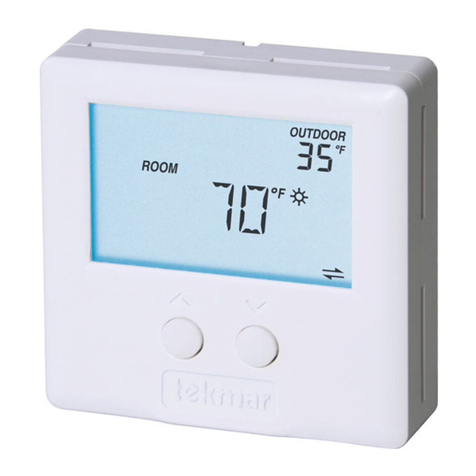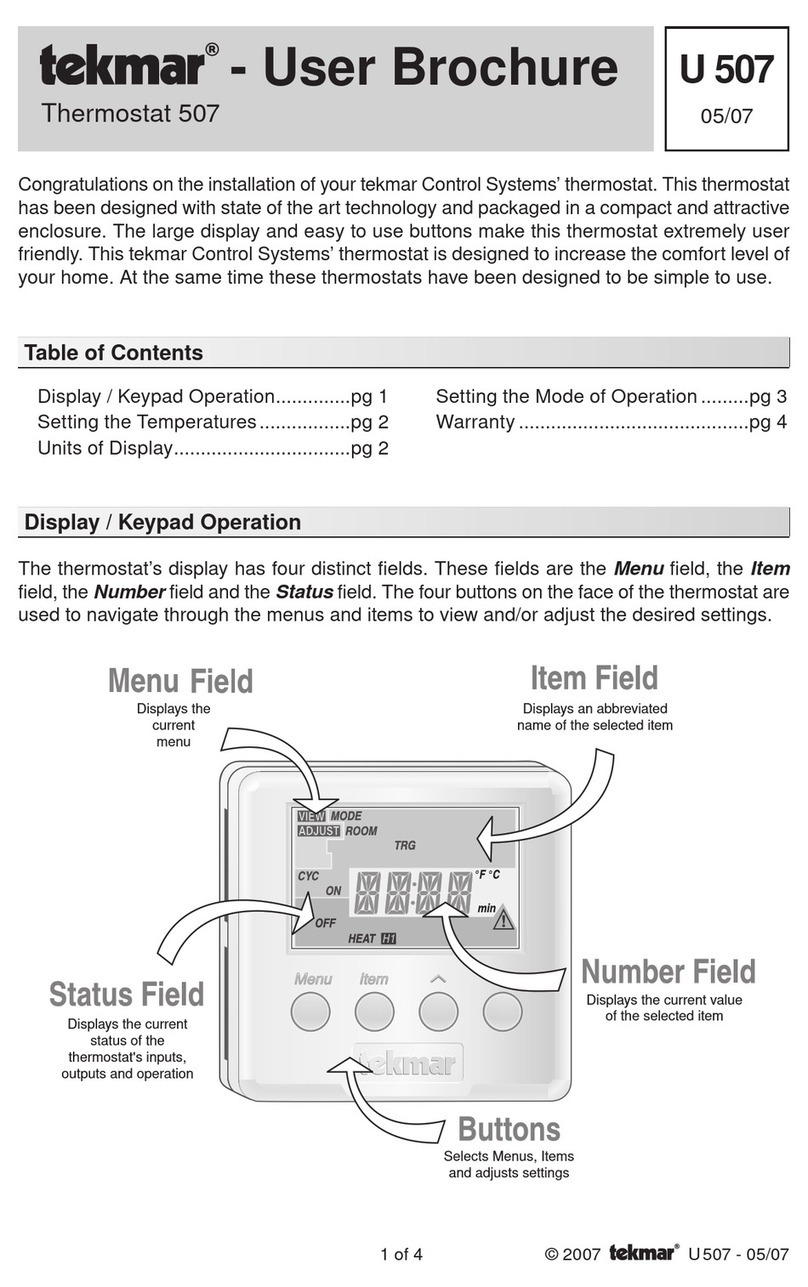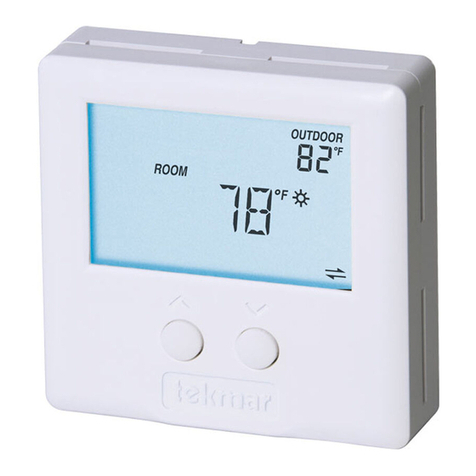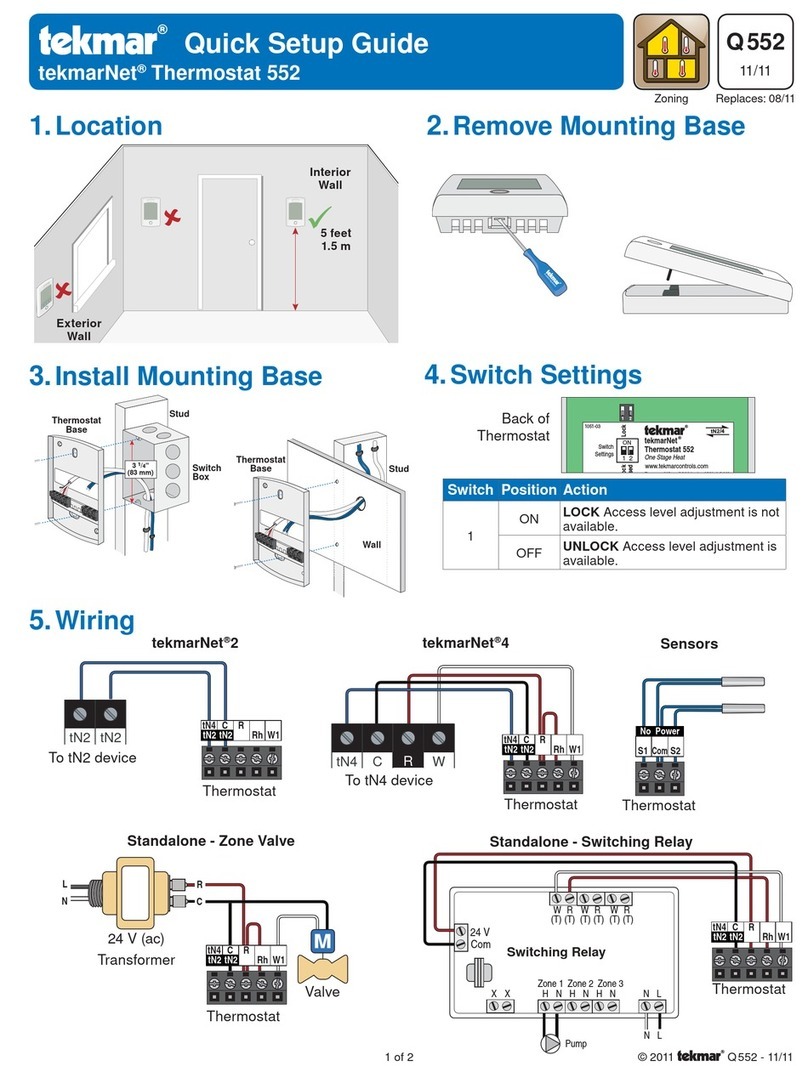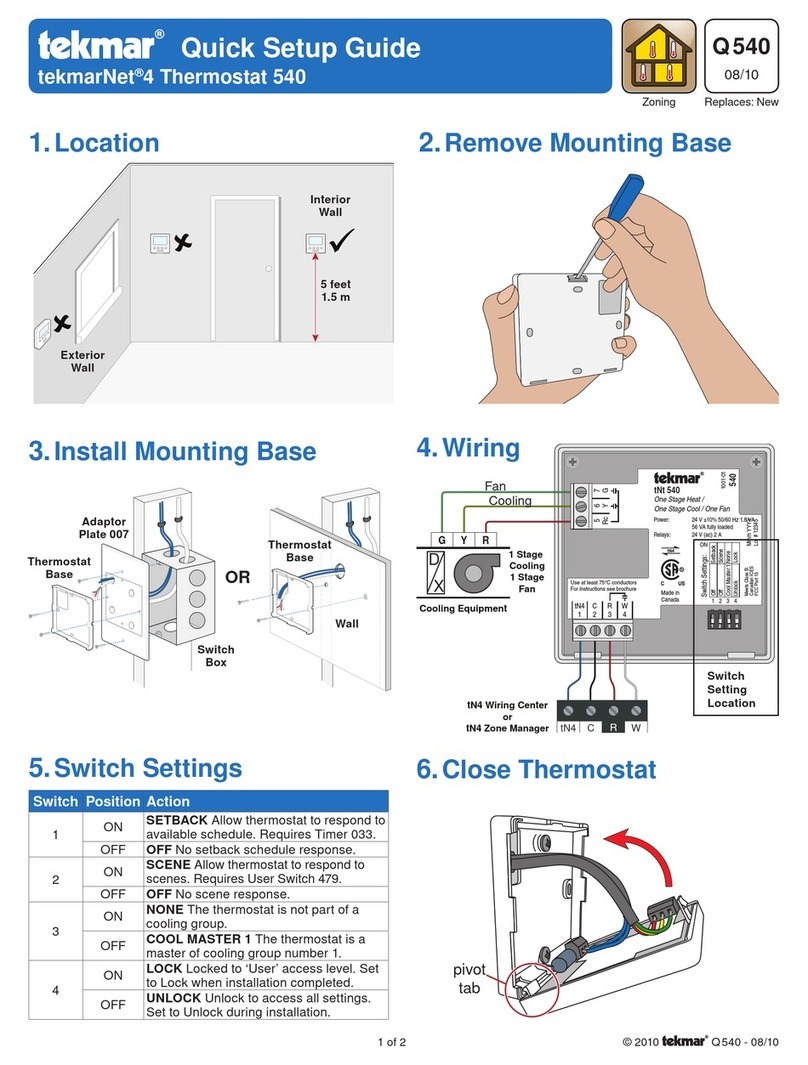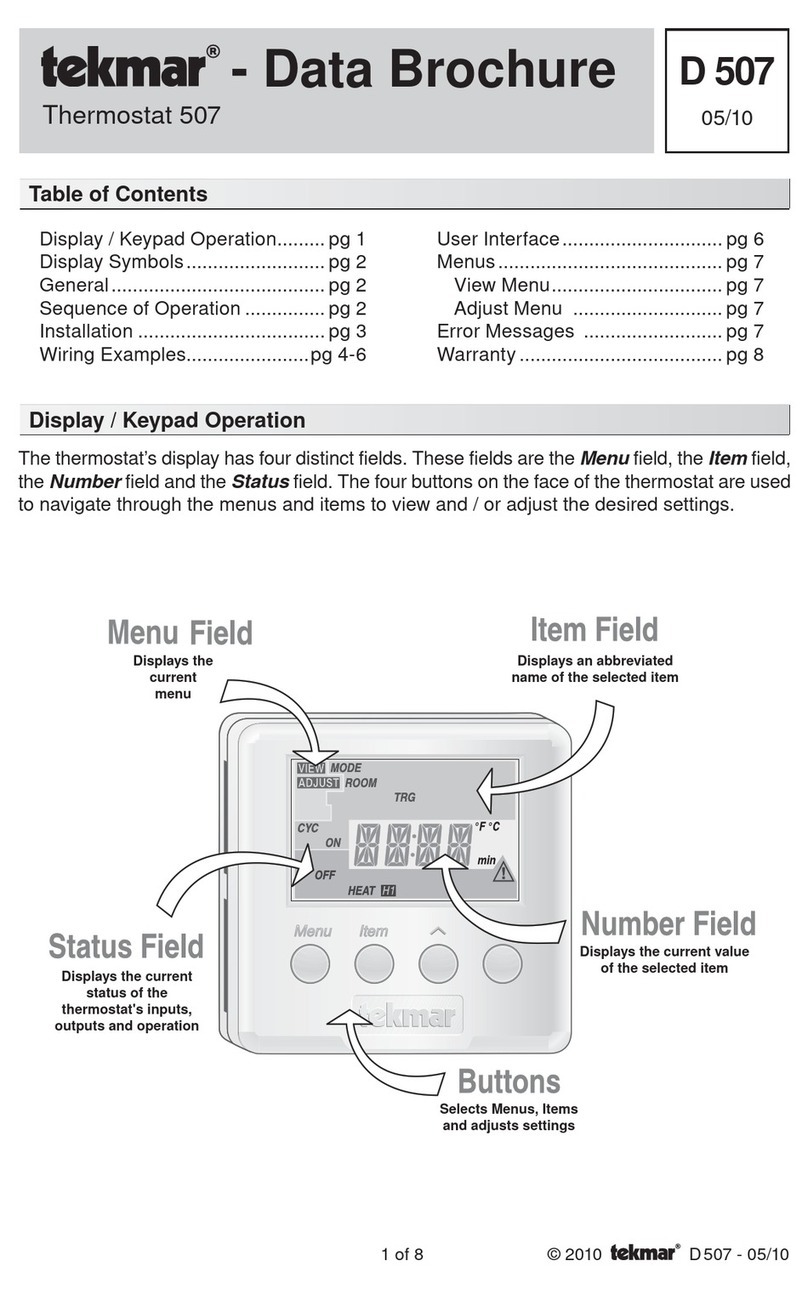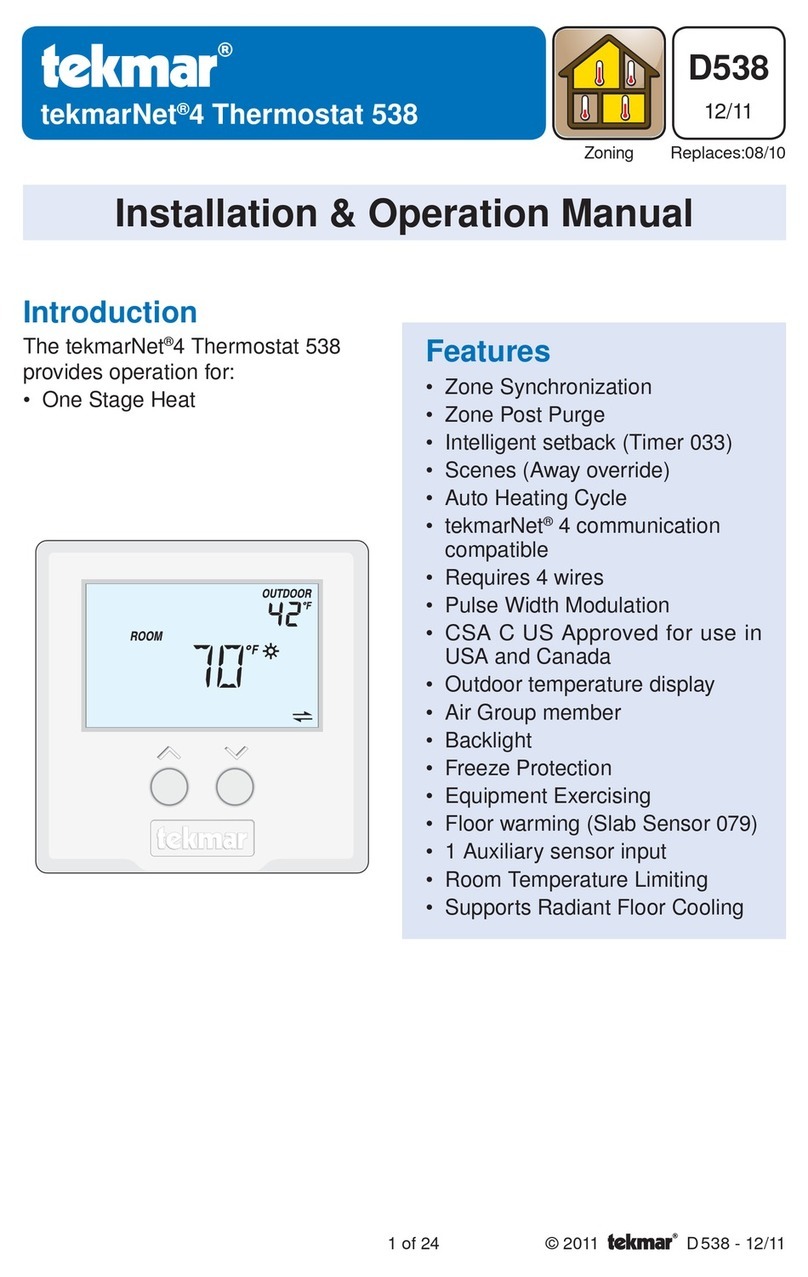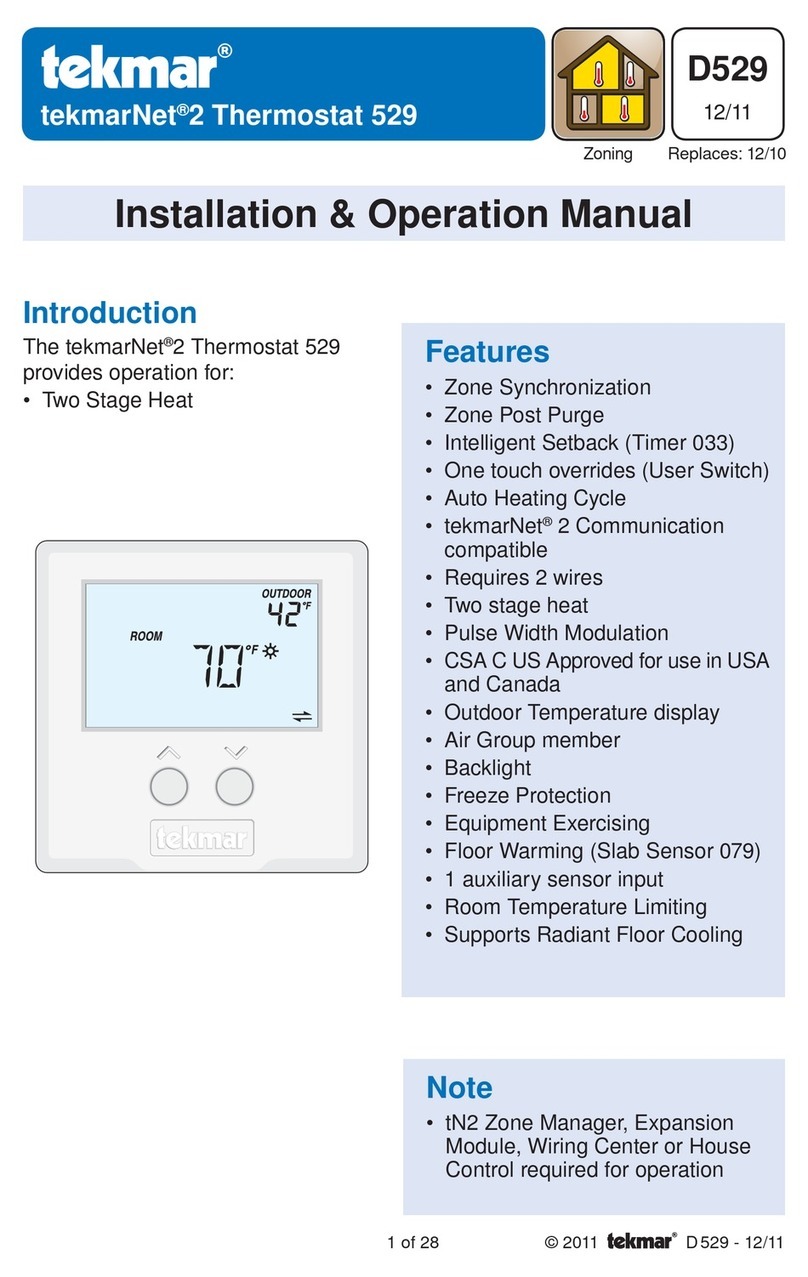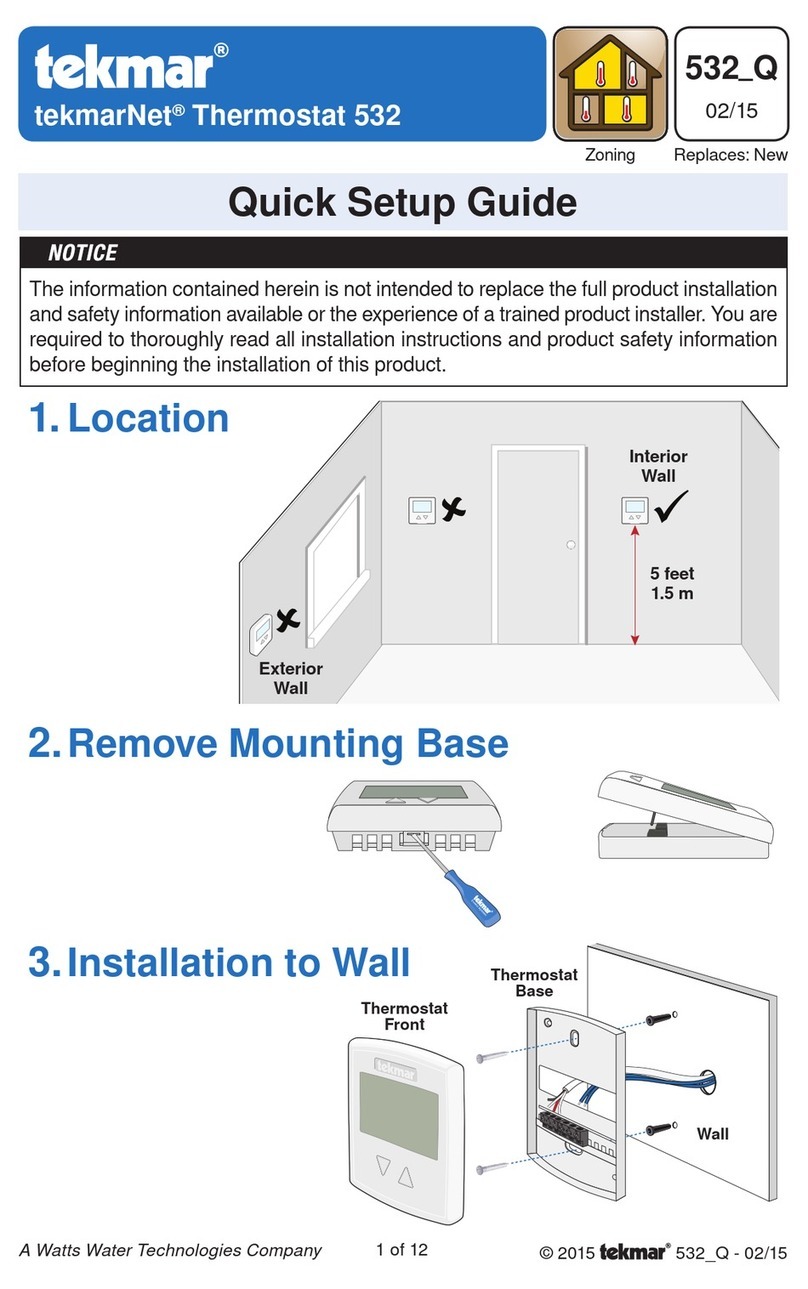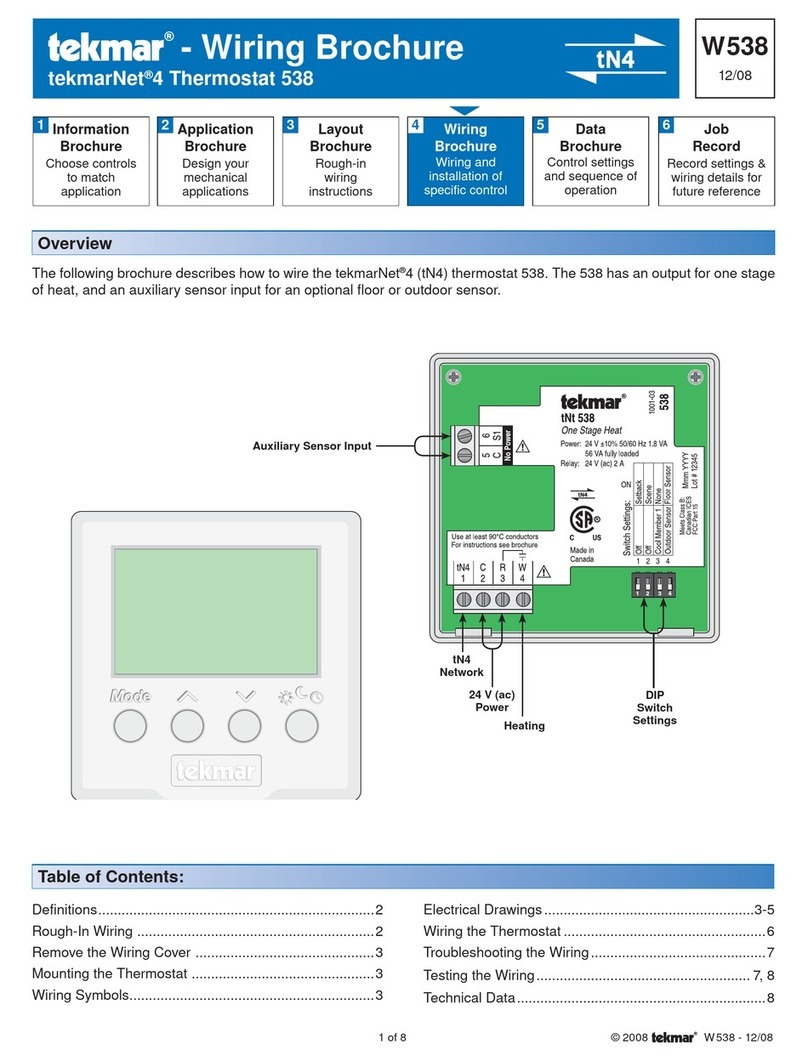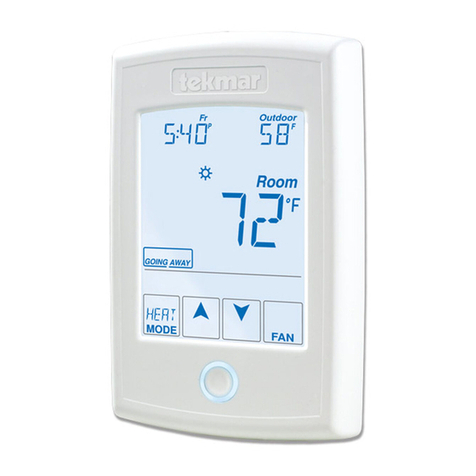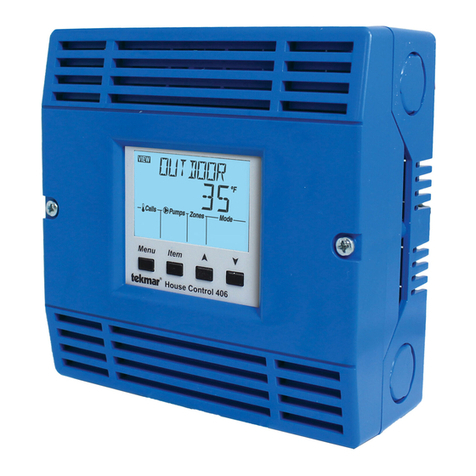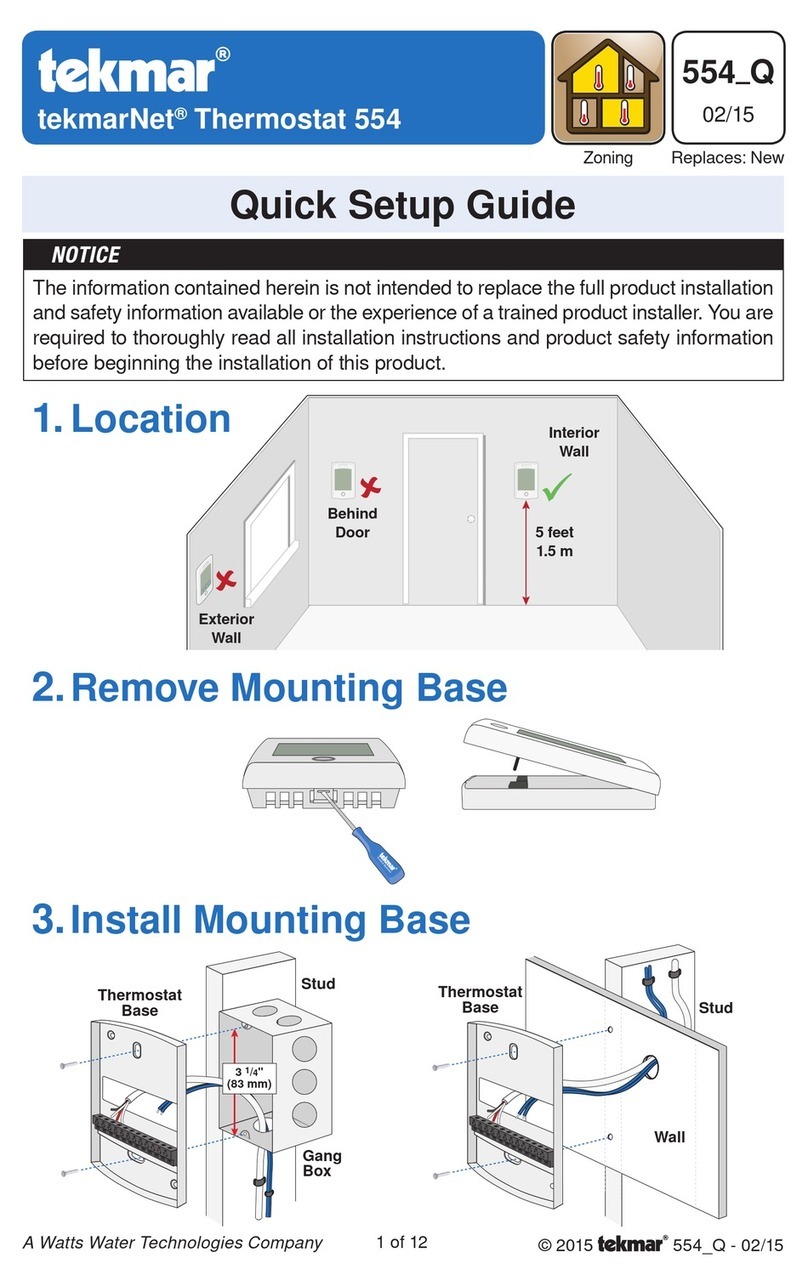
3
Notes on the operation of a PID control and the effect of the PID processing function on target temperature
calculations and control response to temperature change.
In order to reduce excessive temperature droop or overshoot
andmore smoothlystage theboilerson andoff, thiscontrol uses an
advancedProportional+ Integral + Derivativeprocessingalgorithm
to calculate target temperatures. When a desired temperature
–suchasasetpoint–isprogrammedintothecontrol,thecontrolwill
initially use that setting as the exact target temperature. The PID
function however, can affect the calculation of the target tempera-
ture in two significant ways. As an example; when there is a
rapid
increase
in the actual temperature (Derivative), the control will
calculate a lower target temperature than the setpoint in order to
slowdownorreversethestagingonoftheboilersor;whentheactual
temperature
remains above
the setpoint for a long period of time
without changing (Integral), the control will calculate a lower target
temperature in order to more quickly stage the boilers off. Any
change in the calculated target temperature will show up as a
temporary deviation in the LCD target temperature display. The
deviation in target temperature will be reduced as the actual tem-
peratureapproachesthedesiredtemperature.Thisdisplayfunction
can be a useful tool in troubleshooting system problems, and is
discussed in more detail in other sections of this brochure.
Theeffectof the derivative functioncaneasily be viewed when
the "target temperature" fixed display is selected. Certain rapid
control adjustments will have a temporary effect on the target
temperature. By quickly turning up the Heating Curve dial for
instance, the operator will introduce enough derivative error to the
control to drive the target temperature artificially high for a few
seconds. This type of control response is no cause for alarm since
the displayed target temperature will automatically return to normal
when the dials are left alone for 20 seconds, as the control resets
itself. This type of reaction to a sudden change illustrates an
important point that should be considered when designing with PID
controls.
Flow rate and system load changes should be made as
slowly as possible in order to prevent overreaction by the control.
The effect of the Integral function can also be easily viewed by
not allowing a rise in supply temperature when the control asks for
more heat. The displayed target temperature will show a slow but
steady increase, illustrating another important point.
Whenever the
control asks for a change in temperature – ie. stages a boiler on or
off – the control sensor must be able to detect a change as soon as
possibleoritwilloperatetoomanyboilers.(Donotinstallsensorson
return lines).
If a multiple boiler system has adequate, continuous
flow and slowly changing load conditions, the result will be very
smoothstaging, minimal temperature droopor overshoot and oper-
ating characteristics that will provide stable temperature control.
The 258 Display
PRGM
FC
S
TEMP
TIME
USE
ROOM OUTSIDE
AMPM
UNOCC
OVR
SMWTFT
1
2
On when any
temperature
is displayed
On when any
time is displayed
On when displaying setback
program selection or when
programming setback
schedule
Alpha/numeric
time/temperature
display elements
On when the room
temperature selection
is displayed On when the outdoor
temperature is displayed
On when the control is
operating on the #1 setback
program event
On when the control is
operating on the #2 setback
program event
Slowly flashes on & off (temporary),
or is on constantly (permanent),
when override function is operating
Day of week
marker on when
time is displayed
On when any
boiler running
time is displayed
Either °F or °C marker
on when temperature
is displayed
Either AM or PM marker on
when time is displayed
Either OCC or UNOCC
marker on when time or
temperature is displayed
The 258 "Fixed display" options. All other displays will time-out to "ACTUAL SUPPLY – #1"
after 20 seconds with no keypad action.
See "Programming" Section, Pg. 15, for description
Setpoint
Actual
Supply
Target
Supply
F
S
TEMP
OCC
SMWTFT
ACTUAL SUPPLY – #1
F
S
TEMP
OCC
SMWTFT
Setpoint
Actual
Supply
Target
Supply
TARGET SUPPLY – #2
S
TIME
PM
UNOCC
SMWTFT
1
TIME/DAY – #4
F
S
TEMP OUTSIDE
OCC
SMWTFT
OUTDOOR TEMP. – #3
Default fixed display. When
first powered-up, or when
other displays are allowed to
"time-out", the control will
constantly display the supply
sensor temperature.
This fixed display shows the
supply temperature that has
been calculated by the
control to meet the require-
ments of the Heating Curve
or setpoint.
This fixed display shows the time
of day, day of week and some of
the current program operation
information.
This fixed display shows the
outdoor temperature sensor
reading.



